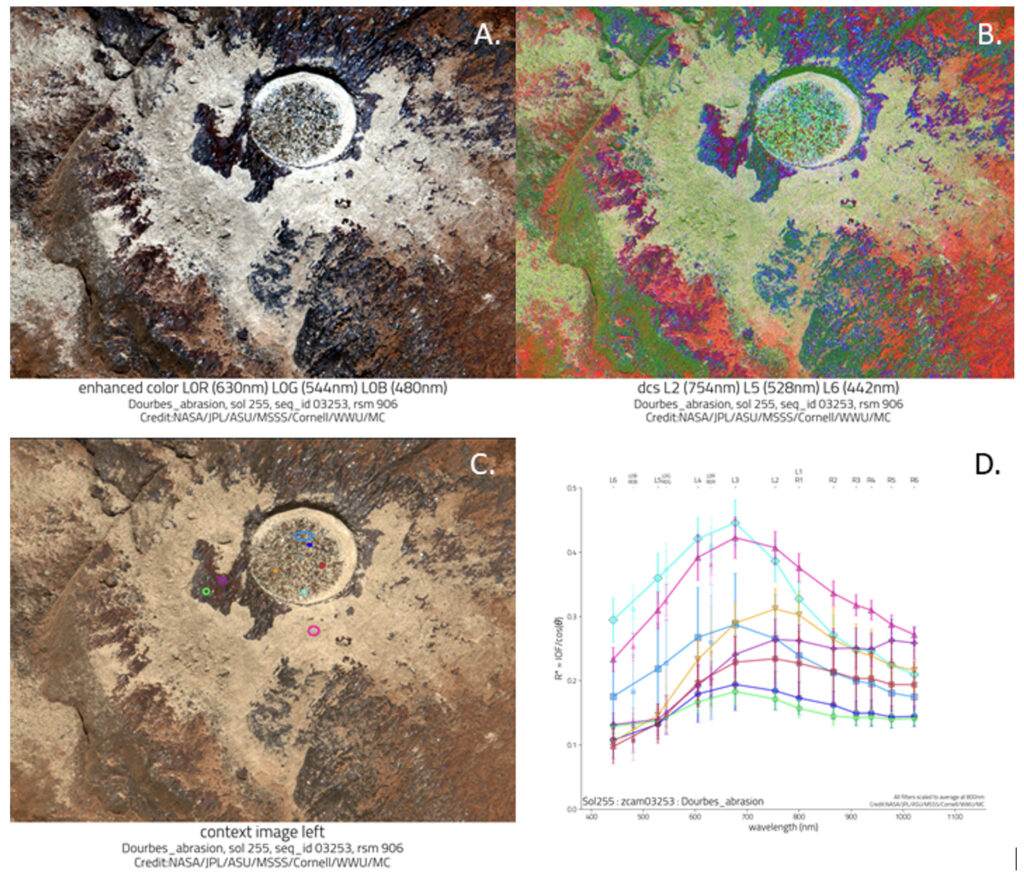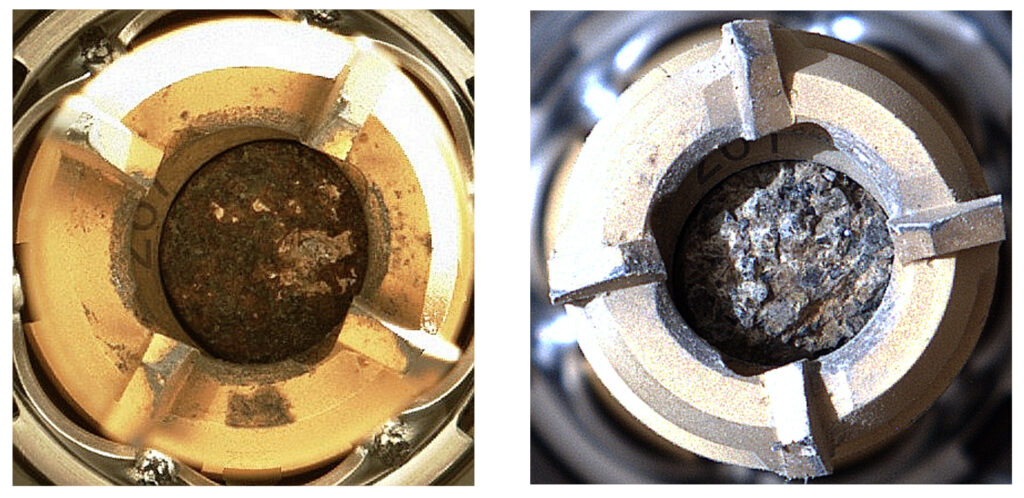
2022-04-08
Sample Cores!
Mastcam-Z Documents Sample Collection at Jezero Crater
Contributed by Alicia Vaughan and Jim Bell
Mastcam-Z plays a significant part in documenting each of the unique samples collected by the NASA Mars 2020 mission’s Perseverance rover in Jezero crater. Here we explain a little about that process and show the Mastcam-Z images of abrasion surfaces and sample cores collected throughout the mission so far.


A primary mission goal for Perseverance is to collect the first samples of Mars and deposit them on the surface for future missions to collect and return to Earth. The Mars 2020 science team has strategically planned out the notional samples to collect from specific geologic units as mapped in this paper by K. M. Stack, et al. Even with that strategic plan, it requires a lot of terrain analysis and planning to determine which specific rock or soil to sample in a given geologic unit because it has to meet many scientific and engineering constraints.
The process of collecting a sample takes many sols because there is a set of standard activities to be completed in the workspace both before and after the sample is collected. Those activities involve using Perseverance’s suite of scientific instruments, including Mastcam-Z, to image, measure, and characterize the sampling location, providing the chemical and textural context for the sample being collected.
Before a rock sample is acquired, an abrasion bit is used to scratch a 50 mm diameter circle into the rock, providing a fresh face for study. These abrasion surfaces are like a little window into the interior of the rock. The abrasion removes any surface weathering or coatings and dust to provide a clearer image of the primary texture and composition. As part of the standard set of activities completed at a sampling workspace, Mastcam-Z collects multispectral images (using 14 mineral-detection filters described in this blog entry) of the abrasion surface at our longest focal length, 110 mm. Though small in area, the spectra we collect from these images (like those presented here by Mastcam-Z and Mars 2020 team members at a recent planetary science conference) are some of the most informative of composition of any measurements that Mastcam-Z makes on the mission.
When we collect Mastcam-Z multispectral data, we make decorrelation stretch images that enhance and highlight the color diversity of the material. That color diversity provides a hint of the real compositional diversity of the material and helps guide where we choose to extract spectra. The intense colors of these images render them almost like a painting – wildly colorful and intriguing, but NOT just a work of art! There is real scientific information in them.

[Figure Credit: NASA/JPL-Caltech/ASU/MSSS/Cornell/WWU/MMC/Alicia Vaughan]
On the sol a rock sample is acquired, Mastcam-Z takes images of the sample inside the coring bit before it is transferred to the Sample Handling Arm in the belly of the rover for sealing and storage. These images capture incredible detail: a granular view showing shapes, sizes, and colors of individual mineral grains not to be seen again until the sample is one day opened on Earth for further analysis! These Mastcam-Z sample core images can be compared to the well-documented abrasion surfaces to help our science team better understand the rocks we are sampling.

Sometimes the science team chooses to abrade a surface for analysis but does not collect a core sample. This has been done so far at the Guillaumes, Garde, and Montpezat rock targets on the crater floor. Those stand-alone abrasion surfaces are noted on the map above as well, and included in the Mastcam-Z image collection. And, as described in detail here, the first sample we tried to collect, Roubion, was a crumbly rock that apparently fell out of the coring bit and left us with an “atmospheric” sample tube sealed and stored in the belly of the rover.

Until we reach our first sample cache site, where Perseverance will deposit some subset of the core sample tubes for future collection, we are collecting double samples (two samples from each selected rock), consistent with the strategy outlined in a NASA Mars Sample Return community workshop presentation in January 2021. While no specific official NASA decisions about sampling caching depots have yet been made, this strategy could potentially allow us to deposit one of each doubled sample in the first sample cache and carry the second sample on to a potential future sample cache location. Regardless of the strategy, one of the main goals is that no matter which cache is collected for eventual return to Earth, what the team judges to be the most important samples will be included.
Check back for more Mastcam-Z images of abrasion surfaces and core samples acquired throughout the mission! We will try to continually update this post with the latest info.